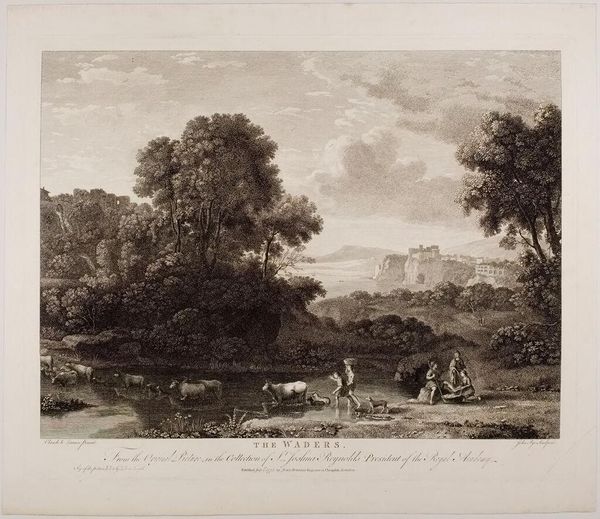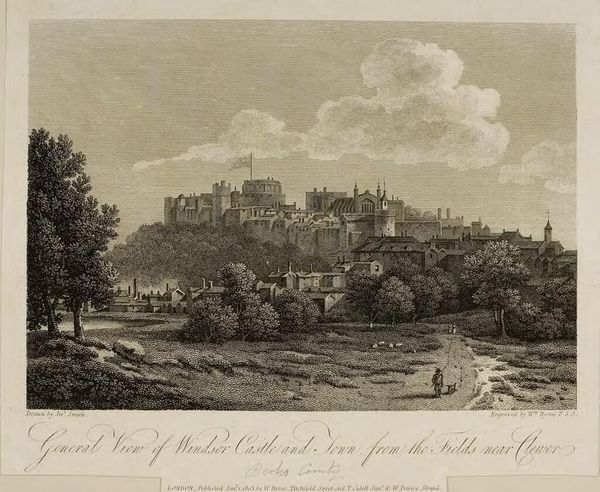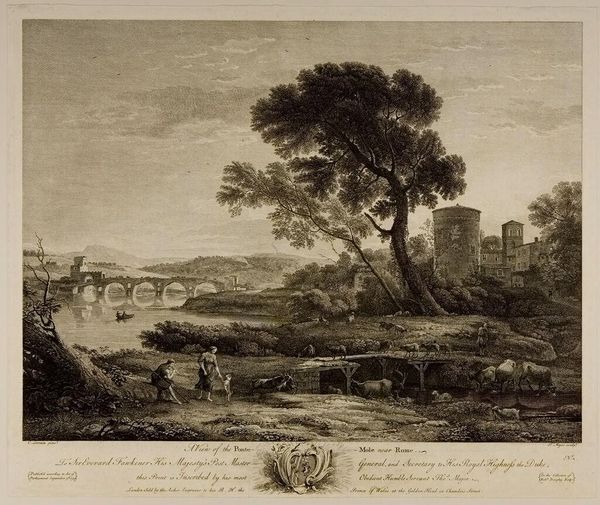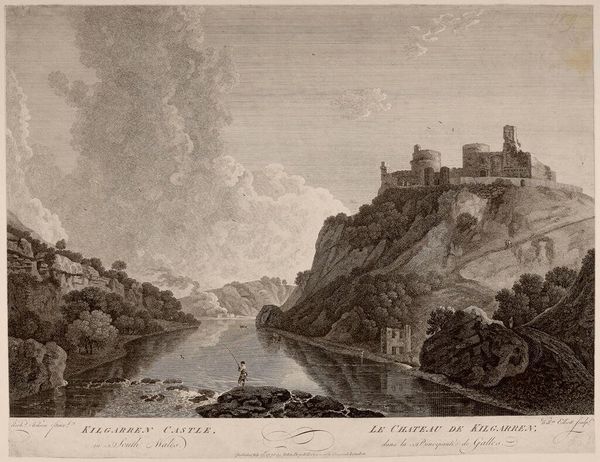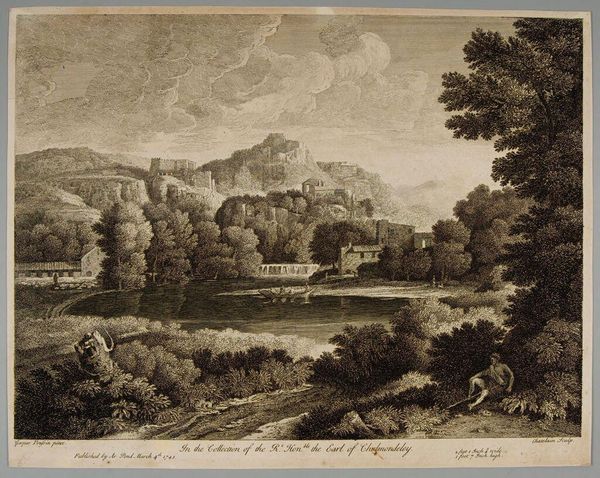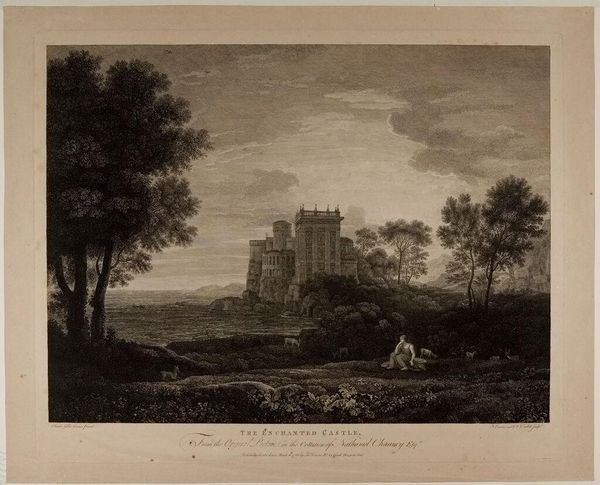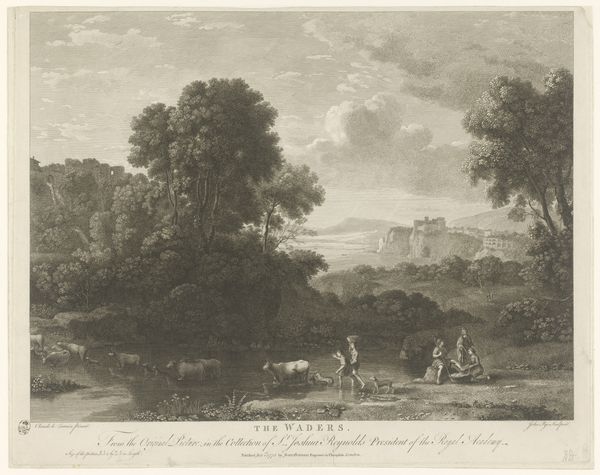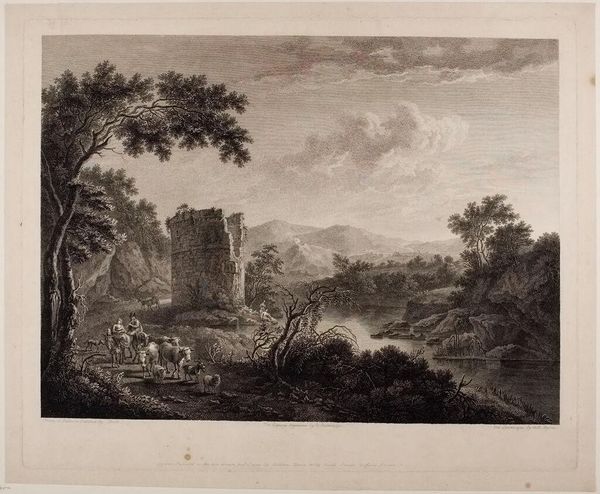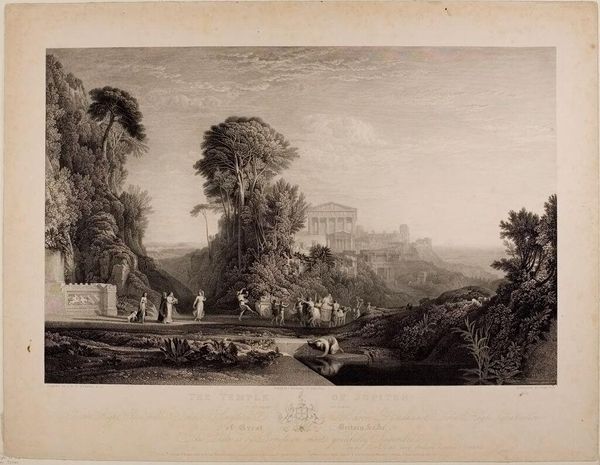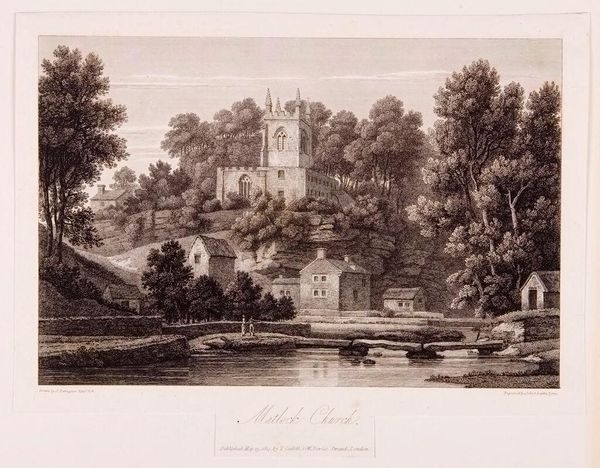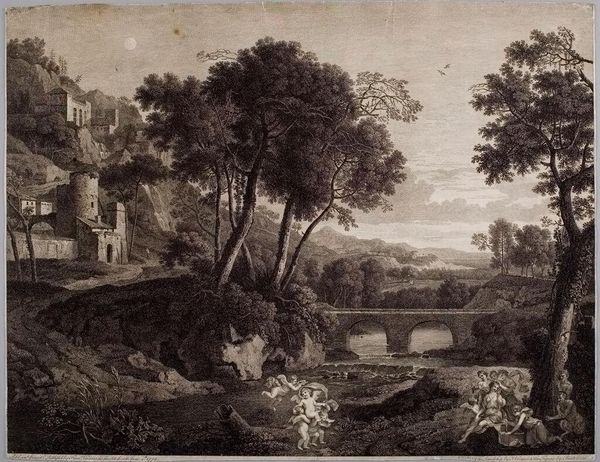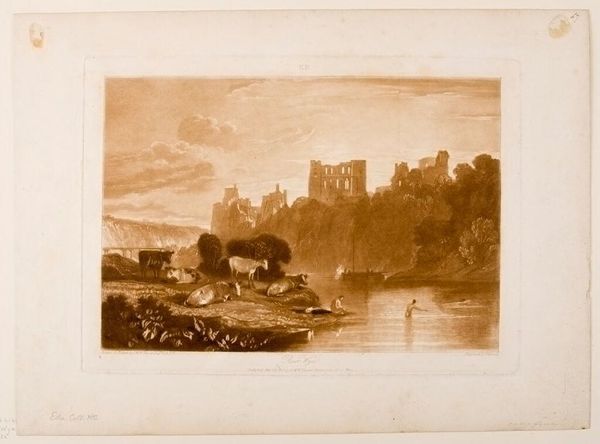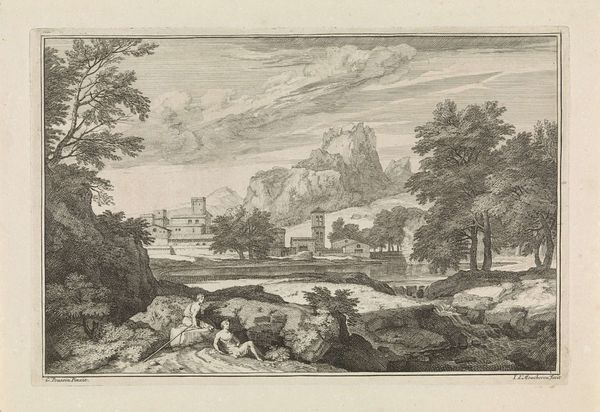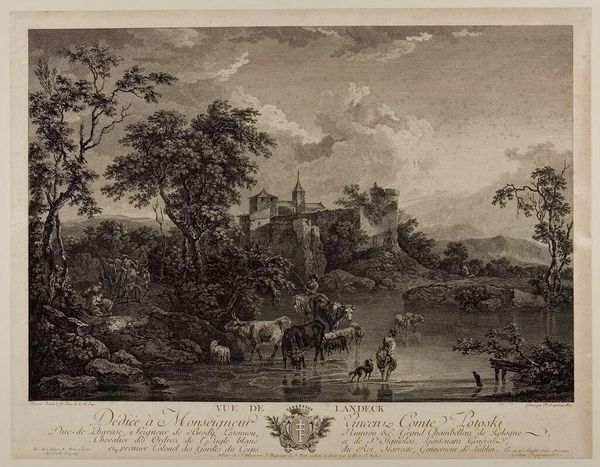
Copyright: CC0 1.0
Curator: This is François Vivares' "Landscape," held at the Harvard Art Museums. It presents a pastoral scene with classical architecture in the distance. The figures seem to be relaxing by the water's edge. Editor: The density of the engraved lines creates such a heavy, almost oppressive atmosphere. The texture of the foliage is so thick. I wonder about the labor involved in producing such an image. Curator: The landscape tradition often intersects with notions of power and ownership. I can't help but wonder who this landscape is really for, and what narratives it reinforces about access and privilege. Is this an idealized vision, masking societal inequalities? Editor: It’s interesting to consider the contrast between the natural setting and the clearly constructed elements, like the bridge and architectural forms. I think it speaks to a human desire to control and shape our environment. Curator: Definitely. Thinking about the cultural context, this piece likely reflects the Enlightenment's focus on reason and order, while also presenting nature as something to be admired and potentially dominated. Editor: The material process itself – engraving – involves a direct, physical manipulation. Understanding that labor adds another layer to the reading of this seemingly serene vista. Curator: Absolutely. It changes how we perceive the relationship between the artwork, the artist, and the social structures that enabled its creation. Editor: Seeing the piece in this light definitely adds more depth than I first anticipated. Thanks for your perspective.
Comments
No comments
Be the first to comment and join the conversation on the ultimate creative platform.
